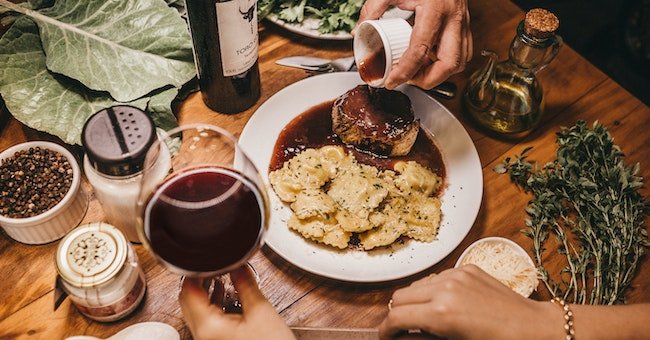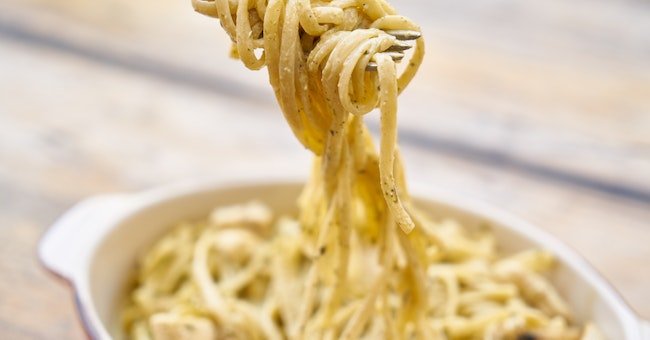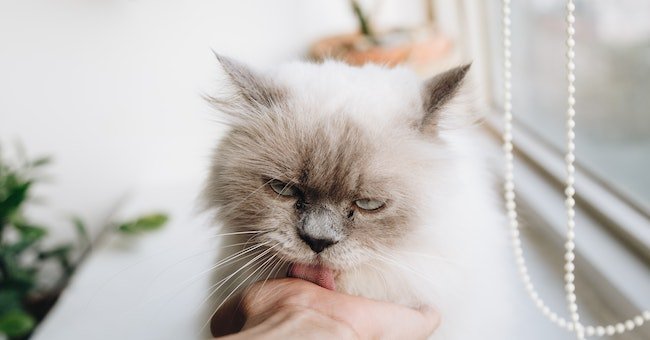Can Cats Eat Mac and Cheese?
Although cats can consume limited amounts of mac and cheese, it is not suggested as a regular part of their diet. Mac and cheese are often high in fat and carbs, which cats may have difficulty digesting.
Furthermore, several types of mac and cheese contain components that are toxic to cats, such as garlic and onion powder. It is best to feed your cat balanced, veterinarian-approved food. If you’re unclear whether a particular food is safe for your cat to eat, consult your veterinarian first.
The Ingredients: Mac and Cheese
Mac and cheese is a traditional comfort food that many people love. However, knowing the ingredients used to make this dish is essential.
Pasta
The most important ingredient in mac and cheese is the pasta. Most mac and cheese recipes require elbow macaroni or other small pasta shapes. These pastas are usually made from durum wheat, which is a type of wheat that is rich in gluten and protein. The result is pasta with the texture of a hard rock, which allows it to hold its shape when cooked.
For mac and cheese pasta to cook, bring an uncovered pot of salted water to a boil, then cook the pasta. The pasta will cook for about 7–9 minutes, or until it’s all in the middle. When the pasta is cooked, you’ll need to remove it from the pot and wash it under cold water to end the cooking process.
Cheese
The second main ingredient in mac and cheese is cheese. There are a variety of cheeses that are suitable for mac and cheese. However, some of the best-known options are cheddar, Colby, and Monterey Jack. These cheeses are usually chopped or shredded before being added to the dish.
When choosing the right mac and cheese, choosing a cheese that melts well is important. This will allow the cheese sauce to blend easily and give it a creamy texture. More hard cheeses, such as Parmesan, can be added to the sauce for flavor, but they might not melt as easily as soft cheeses.
Milk and Butter
To make the cheese sauce to go with mac and cheese, it is necessary to add butter and milk to the pot. The milk helps make the cheese thinner and smoother, while butter adds flavor.
Melt the butter in a pot at medium-low temperature to make the cheese sauce. After the butter has been melted, mix in the flour to create a roux. This will help thicken the sauce and prevent it from becoming too thin. After the roux has been cooked, it is time to slowly add the milk, whisking it continuously. This will result in an even, creamy sauce.
Other Additions
While the primary ingredients of mac and cheese consist of pasta and cheese, milk, and butter, numerous other options enhance the flavor and texture. Some of the most requested additions are:
- Bread crumbs can be sprinkled over the cheese and mac before baking to give it a crunchier texture.
- Bacon: Adding bacon cooked in mac and cheese may provide smokiness and a hint of salt.
- Vegetables: Peas, broccoli, chopped, or other vegetables are great additions to cheese and mac to make it healthier.
- Spices: Spices such as garlic powder, paprika, or mustard powder may add flavor to the dish.
The Risks of Feeding Cats Mac and Cheese
Although sharing some of your favorite food with your furry friend might be tempting, it’s important to note that not all human food items are safe for cats. One of these foods is mac and cheese. This could pose several risks to your cat’s health.
High in Fat and Carbohydrates
One of the biggest dangers of feeding cats mac and cheese is that it’s typically high in carbohydrates and fats. Cats have a distinct digestive system from humans, and they are adapted to digest a diet high in protein but lower in carbohydrates. Feeding your cat a diet high in carbohydrates and fats can result in excess weight, obesity, and other health issues.
Furthermore, cats who eat food that is heavy in carbs are at greater risk of developing diabetes. This is because carbohydrates are broken into glucose. This could result in elevated levels of blood sugar. Over time, this could lead to the destruction of the pancreas and eventually cause insulin resistance.
Contains Garlic and Onion Powder
Another issue with eating mac and cheese for cats is that many varieties of mac and cheese are laced with onion powder and garlic. These ingredients can harm cats and trigger various health problems, including diarrhea, vomiting, and anemia. In extreme instances, they may cause death.
Garlic and onion are part of the Allium family, along with leeks, chives, and shallots. All of these food items contain compounds that could cause damage by oxidation to the red blood cells of cats. This can cause a condition known as Heinz body anemia, characterized by the loss of red blood cells.
When It’s Okay to Feed Cats Mac and Cheese
As a rule, it’s best not to feed your pet human food such as mac and cheese. However, there could be certain situations when giving your pet some comfort food is acceptable.
As A Treat In Small Amounts
If you’d like to feed your cat mac and cheese, you must do it in moderation. A small amount of cheese and mac as a treat is fine occasionally, but you should be cautious about feeding your cat a large amount of it. Remember that cats have different needs for food than humans, and a diet high in carbohydrates and fats can cause health issues.
It’s important to remember that if your cat suffers from an illness or has a specific diet, then you must not feed them mac and cheese. Always consult your vet before introducing new foods into your cat’s diet.
Homemade Mac and Cheese
If you plan to feed your cat mac and cheese, it is best to prepare it at home. Home-cooked mac and cheese lets you control the ingredients and ensure that there aren’t any harmful preservatives or additives. You can modify your recipe to be more pet-friendly, like using whole-grain pasta and low-fat cheese.
When making your mac and cheese at home, avoid adding ingredients harmful to cats, like onions or garlic. It is also recommended not to add spices or seasonings since they could upset your cat’s stomach.
Supplement to Their Regular Diet
Another reason it might be okay to give your cat mac and cheese is to add to their diet. If your cat is a selective eater or has a reduced appetite, giving them a small portion of cheese and mac may make them more inclined to consume. However, it’s essential to ensure that mac and cheese isn’t the only food that your cat is eating.
Cats have a specific nutritional need, and a diet high in carbohydrates and fats could cause health issues in the long run. Suppose your cat isn’t eating their usual food. In that case, it is essential to talk with your veterinarian to determine any health issues that may be underlying and formulate an action plan to address them.
Other Human Foods That Cats Can Eat
As a cat’s owner, you might wonder what human food your cat can eat safely. While it is important to remember that cats have their own diets and should consume healthy and balanced cat food, some human-based foods are safe to offer as treats or supplements.
Cooked Meat
Cats are carnivores by nature, meaning they need meat to satisfy their nutritional requirements. Cooked meat can be a healthy and safe cat food that cats can consume in moderation. Ensuring that your meat is cooked well and free of bones or other seasonings is important. Turkey and chicken are great for cats because they’re lean and protein-rich.
It’s important to remember that while cooked meat is safe for cats to consume, it shouldn’t be the sole food source for their diet. Commercially available cat food provides all the essential nutrients cats require to remain healthy.
Fish
Fish is a human food item that cats can consume in moderate amounts. Many commercial cat food brands contain fish as the main ingredient. But it’s essential to be aware of the kind of fish you feed your cat.
Certain kinds of fish, like tuna, have high levels of mercury that can be harmful to cats when consumed in large quantities. Restricting the quantity of fish you give your cat and avoiding providing fish cooked with spices or seasonings is recommended.
Fruits and Vegetables
Although cats are carnivores by nature, they can still eat small portions of fruits and vegetables as an added benefit to their diet. The most suitable options for cats are cooked sweet potatoes, squash, and small amounts of chopped fruits such as blueberries or apples. It is important to remember that cats have a limited capacity to digest plant-based food, so they should be served in small quantities.
It’s also important to avoid serving any fruit or vegetable that is harmful to cats. Some examples of food items that are toxic include raisins, grapes, garlic, onions, and
Signs of a Food Allergy in Cats
Cat food allergies are becoming more frequent and can trigger many uncomfortable symptoms. As a cat’s owner, it’s essential to identify the symptoms of an allergy to food in your cat.
Skin Issues
One of the most frequent symptoms of an allergy to food in cats is skin problems. This could include itching, redness, scratching, and itching. Your cat could also develop hives or rashes on their skin. Occasionally, your cat might get open sores or scabs due to excessive scratching. For instance, your cat might excessively chew or lick their paws, causing irritation and redness.
If you observe any of these signs in your cat, bringing your pet to the vet is crucial for an accurate diagnosis. Your vet might suggest changing your diet or prescribing medication to ease the symptoms. They may also suggest medicated shampoos and other topical treatments to calm your pet’s skin.
Digestive Issues
Food allergies can also trigger problems with digestion in cats. Common symptoms include diarrhea, vomiting, or constipation. Your cat might also suffer from abdominal discomfort or pain. For instance, your cat might vomit after eating or have loose stools.
It is important to remember that digestive issues could result from other causes, like changes in diet or the intake of foreign objects. If your pet suffers from digestive problems, it’s essential to see a vet for a diagnosis. Your vet could suggest a specific diet or prescribe medication to ease the symptoms.
Respiratory Issues
In some instances, allergies to food in cats can trigger respiratory problems. They may experience sneezing, wheezing, or coughing. Your cat might also experience breathing difficulties or congestion. For instance, your cat might have an irritable nose, or you may notice that they sneeze often.
If you observe any of these signs in your pet, bringing it to the vet for a thorough diagnosis is crucial. Your vet might suggest changes to your diet or medications to alleviate the symptoms. They might also suggest environmental changes, like using a cleaner for the air or abstaining from specific cleaning products.
Behavioral Changes
Cats with food allergies can cause behavior changes. Your cat could become irritable. They may also be depressed, angry, or agitated. They could also lose their appetite or be less interested in their food. For instance, your cat could keep a distance from social interaction or even avoid it altogether.
If you observe any of these signs in your cat, you must bring your pet to your veterinarian for a correct diagnosis. Your vet could suggest changes to your diet or medication to ease the symptoms. They might also suggest methods for behavior modification or environmental enrichment to improve your cat’s mood.
What to Do If Your Cat Eats Mac and Cheese
As a cat’s owner, it’s essential to be aware of the food your pet is eating because some human food could be harmful to cats. If your cat consumes mac and cheese, you must take specific steps to ensure their safety and well-being.
Check the Ingredients
Then, you should check the ingredients in the cheese and mac. A lot of mac and cheese products contain ingredients that are dangerous or even harmful to cats, for example, garlic powder or onion. If you suspect that the mac and cheese you purchase contains some of the ingredients listed above or are uncertain about it, it’s best to stay on the safe side and seek veterinary assistance.
For instance, if your cat consumes mac and cheese that contains onion powder, it might be prone to vomiting, diarrhea, and a loss of appetite. In extreme instances, onion toxicity may cause anemia and damage red blood cells. These could be life-threatening.
Monitor Your Cat
Monitor your cat’s behavior closely over the next 24 hours. Keep an eye on any signs of change in your cat’s behavior or physical signs like vomiting or diarrhea, apathy, or a loss of appetite. If you observe any of these signs, take immediate action to see a veterinarian.
It is important to remember that prevention is the most effective strategy to keep your cat healthy and safe. Do not feed your cat human food like mac and cheese unless it’s specifically designed for cats and has been approved by your vet.
Homemade Mac and Cheese for Cats
As a cat’s owner, you might be tempted to give your food to your furry companion. However, it’s important to know that not all human food items are safe for cats. If you’re a lover of mac and cheese and wish to give this food to your cat, there are methods to create an uncooked version that is safe for cats to consume.
Ingredients: The first step to making your mac and cheese is gathering the required ingredients. It is important to select ingredients that are safe for your cat to eat. The ingredients you’ll require include:
- Whole-grain pasta: Choose pasta made from whole grains like brown rice or quinoa because they are healthier options for cats.
- Cheese: Use just a tiny portion of low-fat cheese like cheddar or mozzarella, as they are easier for cats to eat.
- Water: You’ll need water to cook pasta and prepare the cheese sauce.
- Optional: Add chopped and cooked tuna or chicken to add protein.
Preparation
Once you’ve gathered all the ingredients, you’re ready to make the mac and cheese. Following these steps
- Prepare the pasta according to the instructions on the package.
- Rinse the pasta and place it aside.
- Prepare a small amount of water in a separate pan before adding the cheese. Mix until the cheese melts and creates an emulsion.
- Add the pasta that has been cooked in the cheese sauce. Stir until the pasta is fully coated.
- Mix in the chopped and cooked meat if you’re adding tuna or chicken.
Serving
When you make mac and cheese for your cat, it is important to portion it appropriately and not overfeed them. Feed your cat a small amount, like one or two teaspoons, and watch the reaction. If they appear to like the food and do not have any negative reactions, you can give them a bit more.
Also, it is important to remember that while mac and cheese made at home is a delicious snack for your cat, it is not meant to substitute for their regular diet of commercial, high-quality cat food. Always consult your veterinarian before making any changes to your cat’s food.
FAQ’s
Can cats eat mac and cheese?
While cats can eat small amounts of plain pasta, it is not recommended to feed them mac and cheese as it is high in fat and dairy. Cheese can also be difficult for cats to digest and can cause digestive issues.
Is cheese safe for cats?
Cheese is generally safe for cats in small amounts, but it is not recommended as a regular part of their diet. Some cats may be lactose intolerant and may experience digestive issues after consuming dairy products.
Can cats eat pasta?
Plain pasta can be a safe and occasional treat for cats. However, it should not make up a significant part of their diet, as cats require a balanced diet of protein, fat, and carbohydrates.
What should cats eat instead of mac and cheese?
Cats should primarily eat a diet of high-quality protein, such as meat, fish, or poultry. They also require essential vitamins and minerals, which can be found in commercial cat food or a balanced homemade diet recommended by a veterinarian.
Can cats develop health issues from consuming mac and cheese?
Consuming large amounts of mac and cheese can lead to health issues such as obesity, digestive issues, and pancreatitis in cats. Additionally, the high fat and dairy content in mac and cheese can cause gastrointestinal upset in some cats.
What are the symptoms of digestive issues in cats?
Symptoms of digestive issues in cats may include vomiting, diarrhea, lethargy, loss of appetite, and abdominal pain. If your cat experiences any of these symptoms after consuming mac and cheese, it is important to seek veterinary care.















